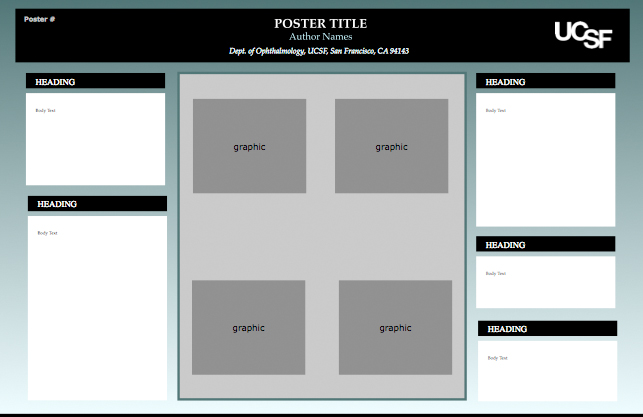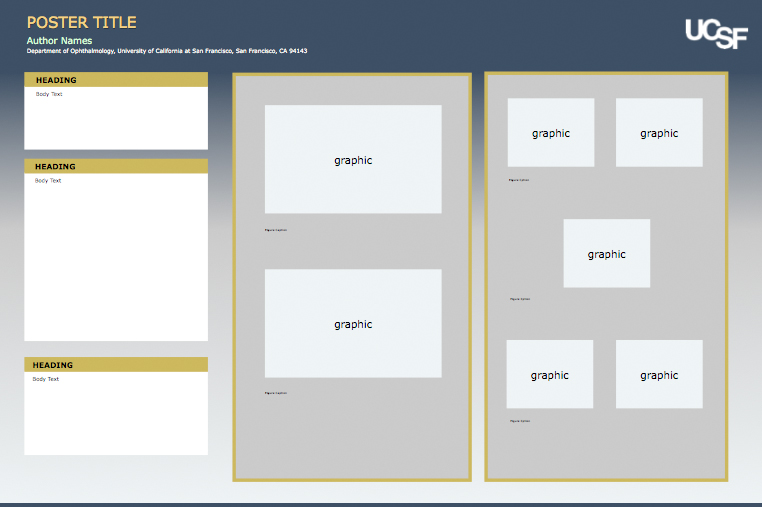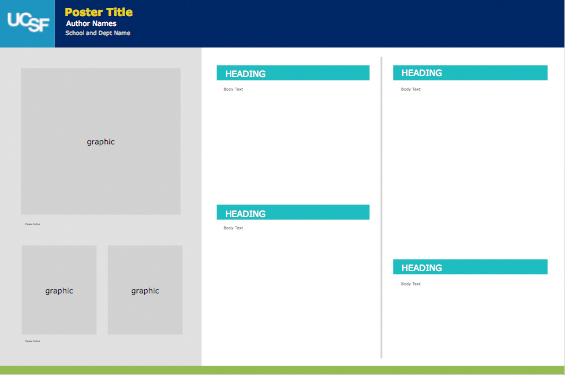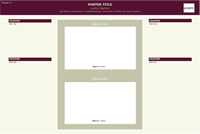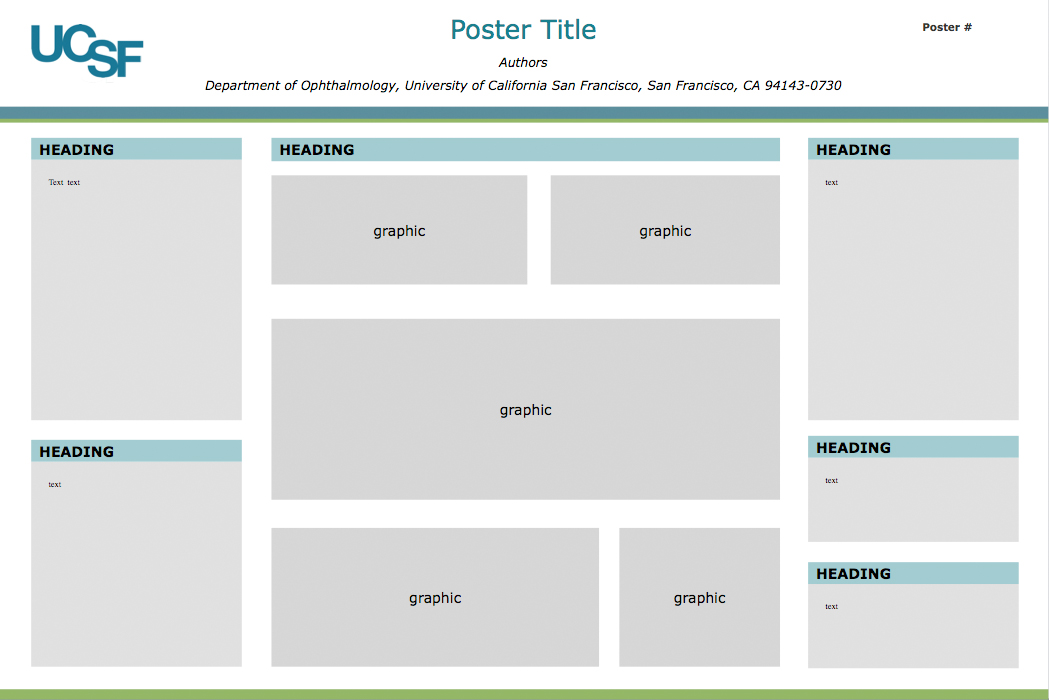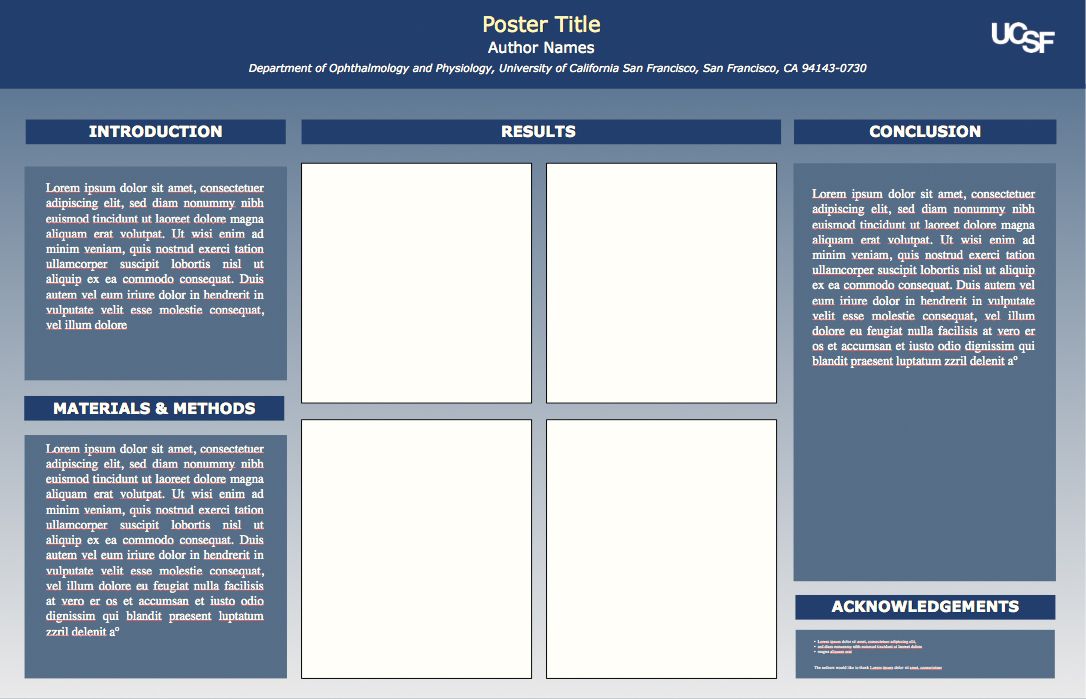Advanced Imaging and Analysis (AIA) Core Module
Templates, Logos, Presentation Tips & Resources
Contact Suling if you need clarification on any of the advice below.
#1 Advice for Those Starting Work on a Poster: Before you begin laying out your poster, look up your conference size restrictions and set the page size of your poster layout accordingly.
- For example: if your conference has a vertical display and you lay your poster out as a landscape poster, you will need to resize and rework your poster at the last minute or have a much smaller poster than anticipated.
- Another mistake people make is laying out their poster very small (for example letter-sized) and not taking into account that when the layout is scaled up drastically to fill a poster, unexpected things can happen. It is ok to create your poster a little smaller than the final print size – but drastically smaller can cause problems.
- NOTE: If using Powerpoint to lay out a poster, the software has a limit to how big you can size a page. The workaround is to set it as large as possible, but keep it proportional to the final print size, so that it can be scaled up proportionately when printing. For example, the Powerpoint templates below are sized at the maximum width allowed by Powerpoint but set to be proportional to a typical ARVO poster.
Other Important Advice Related to Image Resolution in Posters Prints:
- It is best to use JPEG images set to Max Quality that are at least 200-300 dpi at the size that your image will appear in the final print. It doesn’t have to be exact, but if you imagine your poster at the final print size and take into account how big your image will be on the final poster, the image should be at least 200-300 dpi at that size to look good in the final print. If you take a graphic that looks fine on your monitor and scale it up to fill a space on your poster without regard to the resolution of the image, it can result in your image printing out blurry or pixelated. For example, if your image will be about 5 inches wide in the final poster print, the image size should be at least 200 dpi when set to 5 inches wide in an image editing software such as Photoshop.
- To preview final print quality, view your poster at 100% view on your monitor and pan through your poster. Your images will print out pretty close to what you see on the monitor at this view. So if it is unacceptable, try your best to replace with higher resolution images.
- Using Jpegs that are Max Quality is better than using tiffs since tiffs use a lot more memory. If your poster layout has a lot of large tiffs in it, it can make your poster layout very memory intensive and difficult to work with.
UCSF Branding Downloads
The UCSF Branding website has several poster templates as well as templates for other uses available for download. View poster templates on UCSF Branding site.
Other Templates:
UCSF, AMS and RPB logos
Logos below are high resolution and suitable for printing. For more logos and guidelines on proper usage, visit the UCSF Branding website.

Download PNG
Powerpoint Presentations
Visit the UCSF Branding website for Powerpoint presentation templates and other materials.



